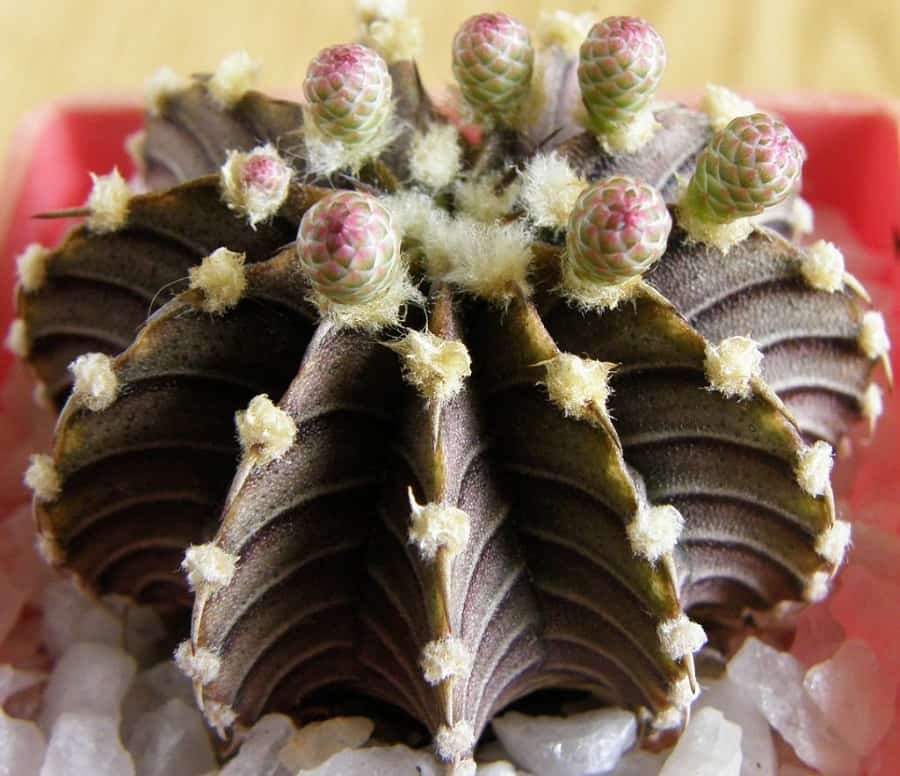Gymnocalycium Friedrichii: Characteristics and Care
Tired of struggling to keep your Gymnocalycium Friedrichii alive? You’re not alone! This captivating cactus can be a real head-scratcher, but fear not – we’ve got the insider secrets to help you grow like a pro. Get ready to unlock the mysteries of this pint-sized powerhouse and watch it thrive under your green thumb!

Related Post:
96 Types of Gymnocalycium With Pictures
Contents
Meet the Gymnocalycium Friedrichii
This dwarf cactus, native to Paraguay, is a real showstopper with its globe-shaped stem reaching up to 2 inches tall and 3 inches across. But what really steals the spotlight are its delicate flowers that can range from pristine white to vibrant yellow, green, or pink, depending on the region. Some varieties crave a little shade, while others soak up the full sun – talk about a versatile beauty!
Gymnocalycium Friedrichii Care Guide

Light it Up
These little gems love basking in bright, indirect sunlight throughout the year. But be careful – too much direct sun can scorch their delicate features and prevent those coveted blooms. If natural light is scarce, don’t worry! Grow lights can work wonders in keeping your Gymnocalycium Friedrichii happily glowing.
Watering Wisdom
With their shallow roots, these cacti are quite sensitive to overwatering. During the summer months, a weekly or bi-weekly drink should keep them quenched. If you live in a warmer climate, they may appreciate a little extra hydration – just make sure the soil dries out between waterings to prevent root rot. Come winter, you can let them go thirsty for longer stretches.
Soil Secrets
Like most cacti, Gymnocalycium Friedrichii thrives in well-draining, gritty potting mixes. Commercial cactus and succulent blends are a great option, or you can whip up your own by mixing in some extra perlite or coarse sand.
Fertilizer Finesse
These low-maintenance marvels don’t require much in the way of fertilizer. However, if you notice their growth slowing to a crawl, a gentle boost from a cactus-friendly fertilizer can give them the pick-me-up they need. Just remember to dilute it to half strength and apply it at the start of the growing season.
Climate Control
While they’re cacti, Gymnocalycium Friedrichii prefer the cozy confines of an indoor environment with bright, indirect light. And forget about frosty temperatures – anything below 50°F (10°C) is a no-go. If the mercury drops, pop them under a glass cloche or warm them up with a little supplemental heat.

Gymnocalycium Friedrichii Propagation Guide
Expanding your Gymnocalycium Friedrichii collection is a breeze with the right techniques. Whether you prefer to grow from seeds or stem cuttings, these hardy cacti are eager to multiply with a little tender loving care.
Stem Cuttings
- Carefully remove a stem segment or offset from the parent plant, using a clean, sharp knife or scissors.
- Allow the cutting to callus over for 3-5 days by placing it in a warm, dry location out of direct sunlight.
- Once calloused, dip the end of the cutting in a rooting hormone powder (optional but recommended).
- Prepare a well-draining cactus potting mix and fill a clean container with drainage holes.
- Plant the calloused end of the cutting about 1 inch deep in the soil mix.
- Water sparingly, just enough to lightly moisten the soil.
- Place the new planting in a bright, indirect location and monitor for new growth.
Seeds
- Obtain fresh Gymnocalycium Friedrichii seeds from a reputable source.
- Fill a clean container with a sterile cactus seed-starting mix.
- Sow the seeds on the surface of the soil, spacing them out evenly.
- Cover the seeds with a thin layer (1/4 inch) of the seed-starting mix.
- Lightly mist the soil to moisten it without saturating.
- Cover the container with plastic wrap or a clear lid to maintain humidity.
- Place the container in a warm (70-80°F/21-27°C), bright location out of direct sun.
- Check daily and mist the soil as needed to keep it lightly moist but not wet.
- Once sprouted, remove the plastic cover and continue caring for the seedlings.
With a little patience and the right techniques, you’ll soon have a thriving colony of these captivating cacti to admire and share with fellow enthusiasts!
